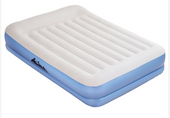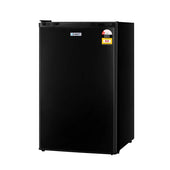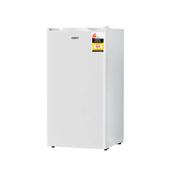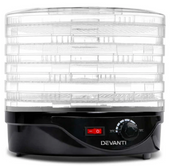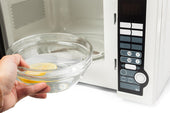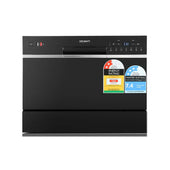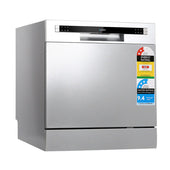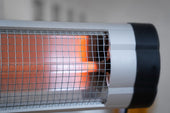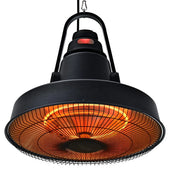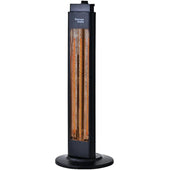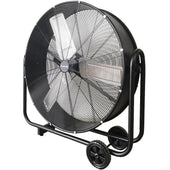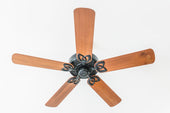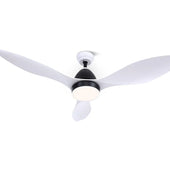Introduction: The Importance of Choosing the Right Kitchen Sink Material
Selecting the appropriate kitchen sink material is a critical decision that influences the functionality, durability, and aesthetic appeal of a kitchen. The sink endures constant usage, from washing utensils to food preparation tasks, making its material a key determinant of longevity and maintenance requirements. Different materials handle wear and tear, heat, and stains uniquely, which impacts their practicality in day-to-day use.
Certain materials, like stainless steel, offer resilience against impact and rust, while others, such as fireclay or granite composite, cater to specific design preferences. As explored on During Days, understanding the strengths and limitations of each option, homeowners can ensure a balance between style and functionality for their kitchen sink.
Stainless Steel Sinks: Durable and Versatile
Stainless steel sinks have long been favoured for their durability and practicality. Known for their resistance to rust and corrosion, they provide a reliable option for busy kitchens. Their non-porous surface ensures easy cleaning while offering a hygienic solution for food preparation.
These sinks are highly versatile, complementing a range of kitchen styles, from modern to industrial. Stainless steel is available in varying gauges; thicker gauges provide increased durability and minimise noise during use. With finishes ranging from matte to brushed, homeowners are offered diverse aesthetic options.
Though prone to minor scratches, these sinks remain an enduring choice in durability and functionality.
Porcelain and Cast Iron Sinks: Classic Elegance Meets Functionality
Porcelain and cast iron sinks bring timeless sophistication to kitchens, seamlessly blending style and utility. Porcelain is prized for its smooth, glossy finish and offers excellent stain resistance. Cast iron sinks, often coated with porcelain enamel, combine durability with visual elegance, making them highly sought after in traditional and farmhouse-style kitchens.
Features and Benefits:
- Aesthetic Value: Porcelain delivers a classic, clean look, while cast iron evokes robustness with vintage appeal.
- Durability: Cast iron resists heavy impacts, and porcelain enamel protects against scratches and discolouration.
- Variety: Available in diverse colours and designs, these sinks cater to varying tastes and themes.
While heavier than other sink materials, their unmatched charm makes porcelain and cast iron popular choices for elevating kitchen interiors.
Granite Composite Sinks: Sleek and Stain-Resistant
Granite composite sinks are crafted using a blend of crushed stone and resin, resulting in a durable and attractive option for modern kitchens. Their surface is naturally resistant to stains, scratches, and chips, making them ideal for heavy usage. Available in a range of colours and finishes, these sinks complement various kitchen styles with a sleek, contemporary look.
Benefits of Granite Composite Sinks:
- Durability: High resistance to wear and tear.
- Non-Porous Surface: Prevents stains and bacterial growth.
- Heat & Scratch Resistance: Withstands hot pans and sharp utensils.
While more affordable than solid granite, they still offer the luxury of stone aesthetics without added maintenance challenges.
Copper Sinks: Unique Charm and Antimicrobial Qualities
Copper sinks offer an elegant aesthetic, known for their warm tones and artisanal appeal. Often handcrafted, these sinks add a rustic yet sophisticated touch to kitchen designs. Beyond their appearance, copper boasts natural antimicrobial properties, reducing the growth of bacteria and other harmful microorganisms, making it a hygienic option for food preparation areas.
Changes in patina over time enhance their unique character, giving copper sinks a distinctive, evolving look. They resist corrosion but may be prone to scratches, dents, or staining from acidic substances. Regular maintenance, such as wiping spills, helps preserve their beauty. Copper suits traditional and vintage kitchen spaces seamlessly.
Natural Stone Sinks: Timeless Beauty and Durability
Natural stone sinks, crafted from materials such as granite, marble, or travertine, offer unparalleled elegance and strength. Their unique veining and patterns ensure that no two sinks are ever identical, adding a touch of exclusivity to any kitchen. These sinks are inherently durable, resistant to scratches, and can withstand high temperatures with ease. However, proper sealing is essential to prevent water and stain absorption.
Advantages include:
- Eco-friendly composition: Sourced directly from nature.
- Versatility: Complements both modern and traditional kitchen designs.
- Longevity: Decades of performance when maintained correctly.
Care involves regular cleaning with mild soap and avoiding abrasive cleaners to protect the stone’s finish.
Acrylic Sinks: Lightweight and Affordable Choice
Acrylic sinks are an increasingly popular option, offering a blend of practicality and affordability. Made from durable acrylic polymers, these sinks are lightweight, making them easier to install compared to heavier materials. Their smooth, non-porous surface resists staining and is simple to clean, which appeals to busy households. Acrylic sinks are available in a variety of colours and shapes, allowing homeowners to customise their kitchen aesthetics with ease. They also provide sound absorption, reducing noise during use.
While acrylic is cost-effective, it is less resistant to scratches and heat than other materials. Proper care, such as avoiding direct contact with hot pans, helps preserve their appearance and longevity.
Fireclay Sinks: Rustic Appeal with Modern Benefits
Crafted by heating moulded clay at extreme temperatures, fireclay sinks combine durability with timeless charm. Their non-porous surface resists staining and scratches, making them ideal for busy kitchens. The smooth finish is easy to clean, and its resistance to acidic substances means fewer worries over food spills.
- Design versatility: Available in various shapes, sizes, and colours to suit diverse kitchen styles.
- Longevity: Robust enough to endure daily wear and tear without chipping.
- Eco-friendly: Made from natural materials, fireclay sinks are sustainable.
These classic sinks blend rustic aesthetics with practical advantages, proving to be both functional and stylish.
Solid Surface Sinks: Seamless Design and Customisation
Solid surface sinks are crafted from a blend of durable resin and mineral materials, offering an elegant appearance alongside excellent functionality. Their seamless integration with countertops ensures a smooth, consistent look, eliminating edges where dirt and debris can collect. These sinks are available in a wide range of colours and finishes, allowing homeowners to tailor the design to suit specific interiors.
Key benefits include:
- Customisation: They can be moulded into unique shapes and dimensions.
- Durability: Resistant to scratches, stains, and minor impacts.
- Easy Maintenance: Non-porous surface prevents bacterial growth.
While aesthetically pleasing and versatile, solid surface sinks may require professional repairs for deep scratches or chips, making proper care vital.
How to Match Sink Materials to Your Kitchen Style
Choosing the right sink material requires aligning functionality with the kitchen’s aesthetic. Each material evokes distinct characteristics and works seamlessly with specific designs.
- Stainless Steel: Ideal for modern or minimalist kitchens due to its sleek appearance, durability, and reflective quality. Pair it with polished chrome fixtures for cohesion.
- Fireclay: Perfect for farmhouse or rustic kitchens with its glossy, traditional appeal. Combine it with warm, muted tones and vintage accessories.
- Granite Composite: Complements contemporary or industrial designs, offering a textured, matte finish. Opt for darker hues in monochromatic palettes.
- Copper: Suits eclectic or vintage kitchens with its natural patina. Match it with wooden countertops for a warm, artisanal feel.
- Cast Iron: Blends well with retro or country-style kitchens and adds a durable, classic focal point.
Coordinating the sink material with the overall design ensures balance and functionality in the space.
Maintenance Tips for Different Sink Materials
Keeping kitchen sinks in good condition requires cleaning and care unique to each material:
- Stainless Steel Sinks: Use mild detergent and a soft sponge to clean. Avoid abrasive cleaners and steel wool to prevent scratches. Dry thoroughly to reduce water spots.
- Granite Sinks: Wipe regularly with a microfibre cloth and non-abrasive cleaner. Avoid acidic substances and harsh chemicals that can damage the surface.
- Porcelain Sinks: Use baking soda or gentle cleaners. Avoid dropping heavy objects to prevent chips and stains.
- Composite Sinks: Rinse after use to prevent stains and use a nylon brush with mild cleaners for deeper cleaning. Avoid bleach-based products.
Proper care ensures longevity, preserving both functionality and aesthetic appeal.
Cost Considerations and Long-Term Value of Materials
When selecting kitchen sink materials, assessing both upfront costs and long-term value is essential. Different materials vary significantly in price, durability, and maintenance costs, which can influence overall investment. For instance, stainless steel sinks typically offer budget-friendly options, while composite granite and fireclay sinks tend to carry a higher initial cost.
Materials such as cast iron offer exceptional durability but may require periodic refinishing over time, impacting maintenance expenses. On the other hand, stainless steel sinks are economical to maintain but may show signs of wear earlier. Buyers should weigh initial affordability against lifespan and repair needs for best value.
Environmental Impact: Sustainable Options for Kitchen Sinks
Choosing an eco-friendly kitchen sink material can reduce environmental harm and promote sustainability. Recycled stainless steel is a popular option, as it uses salvaged materials and remains fully recyclable after its lifespan. Natural stone sinks, like granite and soapstone, are durable and sourced responsibly, though quarrying must meet ethical standards to minimise ecosystem damage. Composite sinks made from recycled quartz or resin offer another sustainable alternative, balancing durability with low resource exploitation. Opting for locally manufactured sinks reduces carbon footprints from shipping. Water-saving features, such as integrated low-flow taps or designs facilitating efficient water use, further enhance eco-conscious choices for the kitchen.
Final Thoughts: Finding Your Perfect Kitchen Sink Material
Choosing the ideal kitchen sink material requires careful consideration of functionality, durability, and style. Each material offers distinct features that cater to diverse needs and lifestyles, making it essential to align preferences with practical requirements.
- Stainless Steel: This timeless option is favoured for its sleek appearance and resistance to stains or heat. It suits modern kitchens and frequent use.
- Porcelain or Ceramic: Known for their classic look, these materials provide a balance of style and substance, although less resistant to cracking under heavy impact.
- Composite Granite: Preferred for its scratch-resistant and non-porous properties, it combines resilience with aesthetic sophistication.
- Fireclay: An elegant yet durable choice, fireclay sinks hold up well to daily demands while offering a rustic charm.
Transitioning through options allows individuals to weigh the pros and cons of each material to match kitchen design, maintenance preferences, and budget.










